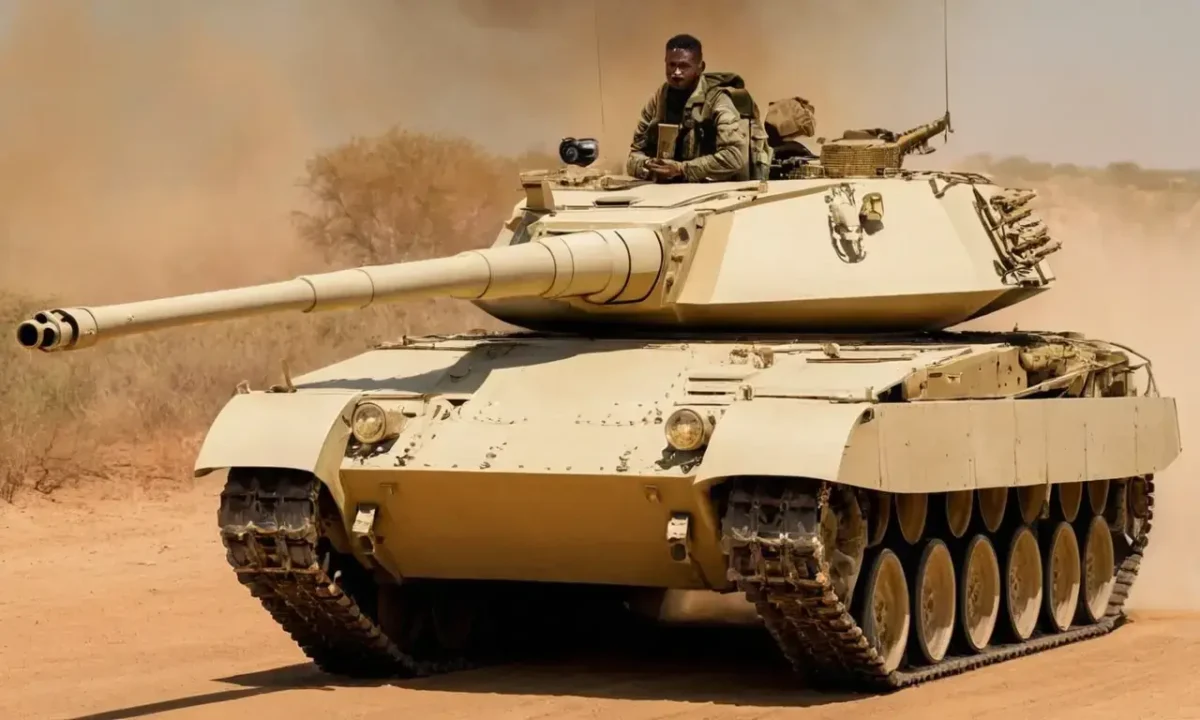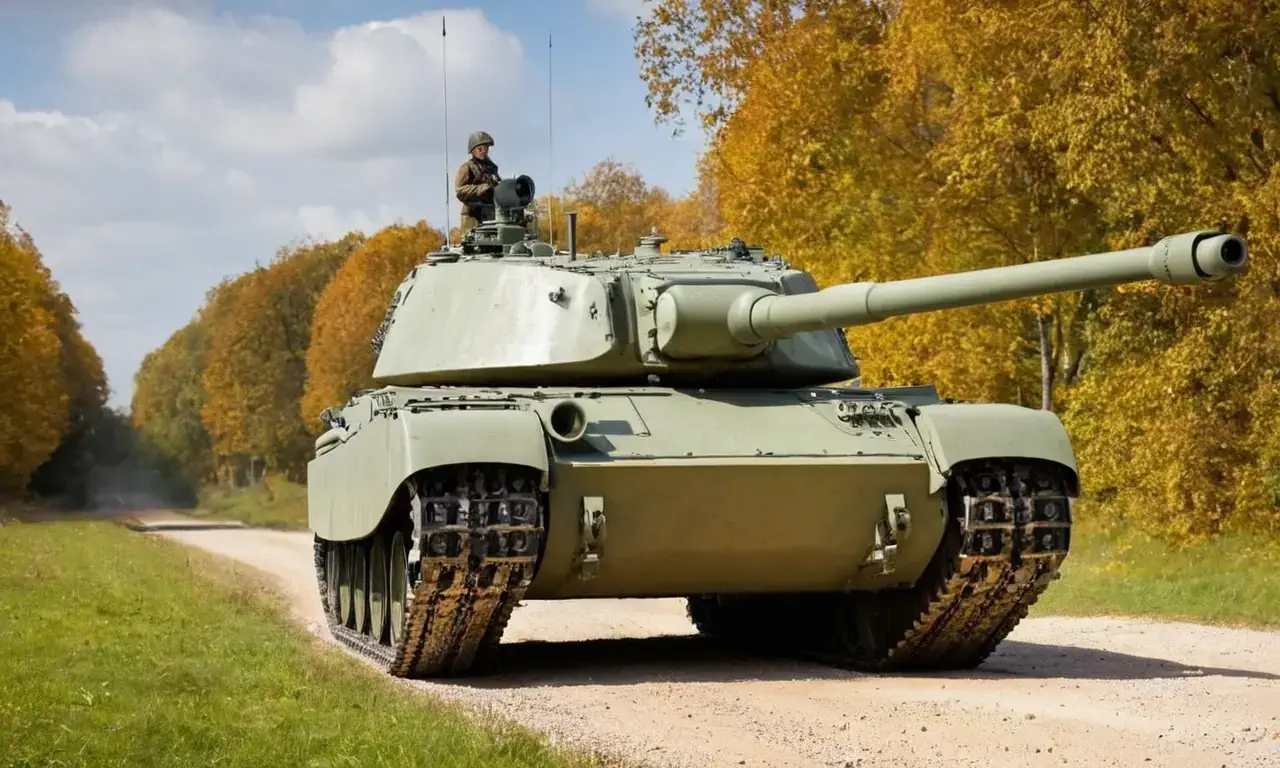
Leopard 1: A Legacy of Innovation in Main Battle Tanks

The Leopard 1 stands as a testament to German engineering prowess, representing a pivotal moment in tank development following World War II. Developed by West Germany for its NATO membership, the Leopard 1 was designed with a focus on versatility and adaptability, setting it apart from previous German designs like the Panther and Tiger. This article delves into the history, design philosophy, operational legacy, and technological advancements of this iconic tank, highlighting its enduring impact on military doctrine and future tank development.
The primary objective of this article is to provide a comprehensive overview of the Leopard 1, exploring its evolution from concept to deployment. We will examine its unique features, including its distinctive layout, powerful armament, robust armor, and significant role in shaping modern armored warfare. By analyzing these aspects, we aim to shed light on the enduring legacy of this influential tank and its contribution to military history.
Development of the Leopard 1
The development of the Leopard 1 began in the late 1950s as West Germany sought to modernize its armed forces for its entry into NATO. The country's post-war experience had highlighted the need for a robust tank capable of engaging in modern conflicts, prompting a focus on technological innovation and adaptability.
The initial design process involved collaboration with renowned German engineering firms like Krupp and Henschel & Sohn. These companies were instrumental in developing the Leopard 1's mechanical systems, including its powerful engine and transmission. The emphasis was placed on creating a tank that could operate effectively across various terrains and combat scenarios.
A key factor driving the development of the Leopard 1 was the Cold War context. As tensions escalated between East and West, the need for reliable and adaptable armored vehicles became paramount. This led to a focus on developing a tank capable of engaging in both conventional warfare and potential nuclear conflicts. The resulting design prioritized heavy armament and robust armor, ensuring its ability to withstand enemy fire and maintain operational effectiveness in challenging environments.
Design Philosophy and Features
The Leopard 1's design philosophy centered around a combination of practicality and innovation. It departed from the more traditional German tank designs like the Panther and Tiger, which emphasized firepower but lacked flexibility in various combat scenarios. The Leopard 1 prioritized a conventional layout with the crew compartment located forward, allowing for better situational awareness and communication.
This layout also facilitated easier maintenance and repair compared to earlier designs. Another notable feature was the Leopard 1's turret design. Unlike previous German tanks that relied on separate turrets, the Leopard 1 featured a single-piece cast turret housing all crew members. This design not only streamlined the tank's overall structure but also enhanced its survivability by providing a more robust and centralized platform for combat operations.
The Leopard 1 was also designed with nuclear warfare in mind. The tank incorporated features like a thick armor plate and a powerful gun, reflecting Germany's commitment to developing a tank capable of engaging in long-range engagements even in the event of nuclear conflict. This foresight contributed significantly to the tank's enduring legacy as a symbol of military innovation and adaptability.
Armament and Armor Capabilities
One of the Leopard 1's most defining features was its powerful armament. The tank featured a 76mm L/48 gun, known for its accuracy and ability to engage both infantry and light armored vehicles effectively. This gun was capable of firing various ammunition types, including high-explosive rounds and armor-piercing shells, allowing the Leopard 1 to adapt to different combat situations.
The tank's armor also played a crucial role in its operational effectiveness. The Leopard 1 boasted a thick frontal armor plate that could withstand significant damage from enemy fire. This feature was particularly important during engagements against heavier tanks and armored vehicles, allowing the tank to maintain its offensive capabilities even under sustained enemy pressure.
The combination of powerful armament and robust armor made the Leopard 1 a formidable force on the battlefield. It allowed German forces to effectively engage in both conventional warfare and potential nuclear conflicts, solidifying its place as a key player in modern military history.
Operational History and Legacy

The Leopard 1's operational history began with West Germany's entry into NATO in 1955. The tank quickly became the backbone of the German Army, seeing service in numerous conflicts across Europe and beyond. Its versatility allowed it to adapt to various combat scenarios, making it a valuable asset for both offensive and defensive operations.
One notable example was the Leopard 1's deployment during the Vietnam War. While not as prominent as other tanks like the M48 Patton, the Leopard 1 saw action in Southeast Asia, demonstrating its ability to operate effectively in diverse environments. This experience highlighted the tank's adaptability and resilience, solidifying its place as a reliable platform for military operations.
The Leopard 1's legacy extends beyond its operational history. The tank has been exported to numerous countries worldwide, including those in Africa, Asia, and South America. Its enduring popularity is a testament to its design principles and the adaptability of its technology. This global presence highlights the Leopard 1's lasting impact on military doctrine and technological innovation.
Impact on Future Tank Designs
The Leopard 1 had a significant impact on future tank designs, influencing the development of numerous subsequent models. Its emphasis on practicality, versatility, and adaptability paved the way for more innovative tank concepts that prioritized both offensive capabilities and operational flexibility.
One notable example is the Leopard 2, which evolved from the Leopard 1. The Leopard 2 incorporated several design improvements based on lessons learned during the Vietnam War and other conflicts. These advancements included a new turret design, improved armor protection, and a more powerful gun, further solidifying the legacy of the Leopard 1's influence on modern tank development.
The Leopard 1's impact on future tank designs is evident in its contribution to the evolution of armored warfare. Its emphasis on practicality and adaptability continues to inspire military engineers and designers today, ensuring that the legacy of this iconic tank will continue to shape the future of military technology.
Technological Advancements
Throughout its lifespan, the Leopard 1 underwent several technological advancements. These improvements aimed to enhance the tank's performance in various combat scenarios while maintaining its core design principles. One notable example was the introduction of a new gun mount system that improved accuracy and reduced recoil. This innovation allowed the Leopard 1 to engage targets with greater precision, further enhancing its effectiveness on the battlefield.
Another significant advancement was the development of a new communication system for the tank crew. This system allowed for more efficient coordination between crew members, improving their ability to react quickly and effectively in combat situations. The introduction of this technology not only enhanced the Leopard 1's operational capabilities but also contributed to its overall survivability by allowing for better situational awareness.
These technological advancements demonstrate the ongoing commitment to innovation within the Leopard 1's lineage. By continually improving its design and functionality, Germany has ensured that the tank remains relevant in modern military operations, reflecting a dedication to adapting to evolving battlefield scenarios.
Modern Variants and Applications
The Leopard 1 continues to be used by several countries around the world today, highlighting its enduring relevance in modern military doctrine. Its adaptability and proven performance have made it a valuable asset for various armed forces seeking reliable and versatile armored vehicles.
One notable example is the Leopard 1A5, which was developed in the late 1970s as an upgrade to the original model. This variant incorporated several improvements, including a new gun mount system that enhanced accuracy and reduced recoil. The Leopard 1A5 also featured a more advanced communication system, further improving its operational effectiveness.
The Leopard 1's continued use in various countries reflects its enduring appeal as a reliable platform for military operations. Its adaptability to different combat scenarios and its proven performance make it an attractive option for armed forces seeking a versatile tank that can meet the demands of modern warfare.
Conclusion
The Leopard 1 has played a significant role in military history, serving as a testament to German engineering ingenuity and adaptability. From its initial deployment during World War II to its continued use today, the tank has witnessed numerous changes and advancements while maintaining its core design principles. Its impact on future tank designs is evident in the development of subsequent models like the Leopard 2, which continues to shape modern military technology.
The Leopard 1's legacy extends beyond its operational history. The tank serves as a symbol of innovation and adaptability, highlighting the importance of continuously improving military technology to meet the challenges of evolving battlefield scenarios. As long as armed forces continue to seek reliable and versatile armored vehicles, the Leopard 1 will undoubtedly remain a significant player in the world of military technology.
Leave a Reply





Related Links